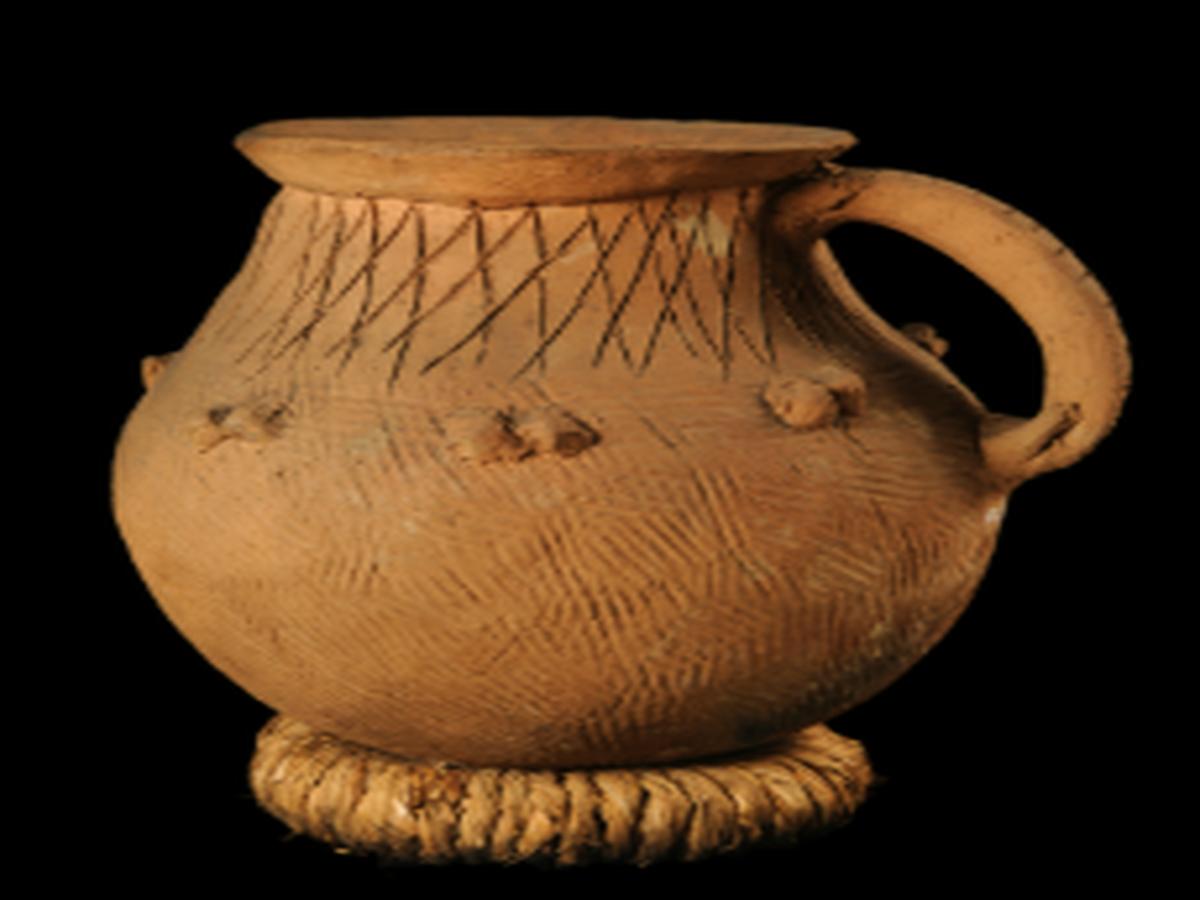State
Tribe Name
Art Type
short description
The Phom Naga people who use the Pot Clay own a Clay Pot which serves as a wonderful earthenware vessel, combining function with richly manifested artistic life. The Phom Nagas, mostly found in Longleng district of Nagaland, are indeed known for their traditional pottery skills which have come down the ages. This clay pot is made from the natural local clay, molded by hands, and hardened by open fire pits for usage in routine work. The striking factor in this pot is its highly decorative, smearily covering the entire surface. The surface bears numerous, fine patterns that symbolize the values of aesthetics and nature to the Phom people. Many of these features are geometric and linear designs, likely representing attributes such as fertility, continuity, or tribal identity.
Thumbnail

Filter Postion
Left
Filter Background
Off
Theme
Filter Header Image

content
Image

description
The Phom Naga people who use the Pot Clay own a Clay Pot which serves as a wonderful earthenware vessel, combining function with richly manifested artistic life. The Phom Nagas, mostly found in Longleng district of Nagaland, are indeed known for their traditional pottery skills which have come down the ages. This clay pot is made from the natural local clay, molded by hands, and hardened by open fire pits for usage in routine work. The striking factor in this pot is its highly decorative, smearily covering the entire surface. The surface bears numerous, fine patterns that symbolize the values of aesthetics and nature to the Phom people. Many of these features are geometric and linear designs, likely representing attributes such as fertility, continuity, or tribal identity.
Right beneath the neck of the pot, rough relief works could be seen-these increase raised textures and designs that not only serve as enhancing the feast to the sight but also mark a good grip with tactile sense. This will be just near the neck for it would be structurally important as this area is generally utilized as the holding point when lifting or pouring. This is normally used for cooking rice, which is a common dish in Phom food. It is generally placed over a round straw base to provide a more steady support on the round bottom, while preventing direct contact with the ground or hearth. This day such traditional pots could spend the rest of their lives in institutes like the Indian Museum, Kolkata, skillfully signifying the craftsmanship of the Phom Naga tribes in terms of cultural heritage and sustainable living practices
Right beneath the neck of the pot, rough relief works could be seen-these increase raised textures and designs that not only serve as enhancing the feast to the sight but also mark a good grip with tactile sense. This will be just near the neck for it would be structurally important as this area is generally utilized as the holding point when lifting or pouring. This is normally used for cooking rice, which is a common dish in Phom food. It is generally placed over a round straw base to provide a more steady support on the round bottom, while preventing direct contact with the ground or hearth. This day such traditional pots could spend the rest of their lives in institutes like the Indian Museum, Kolkata, skillfully signifying the craftsmanship of the Phom Naga tribes in terms of cultural heritage and sustainable living practices
Image Mode
landscape
promoted
On
Verified
Off
